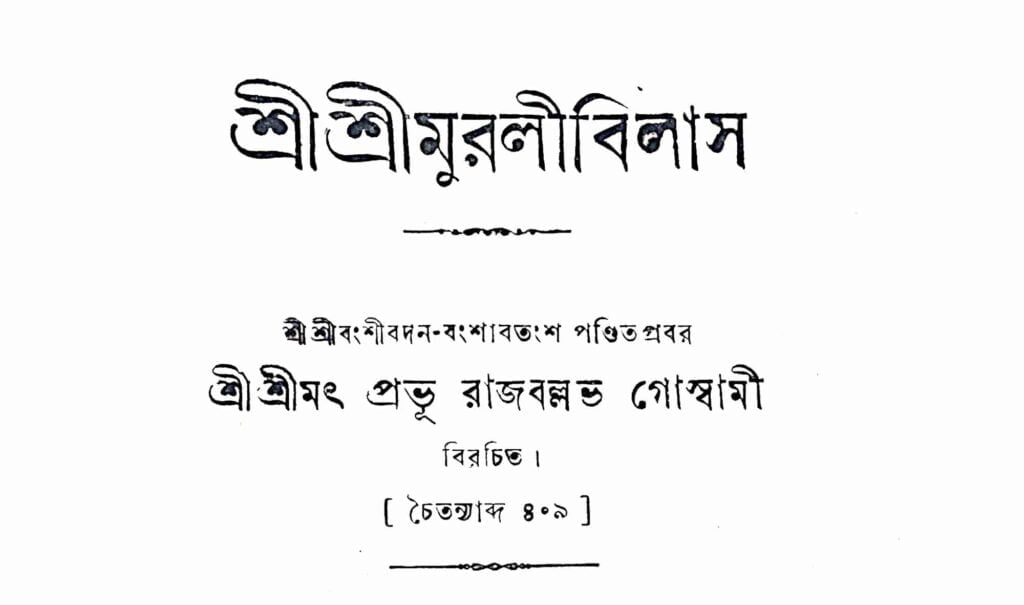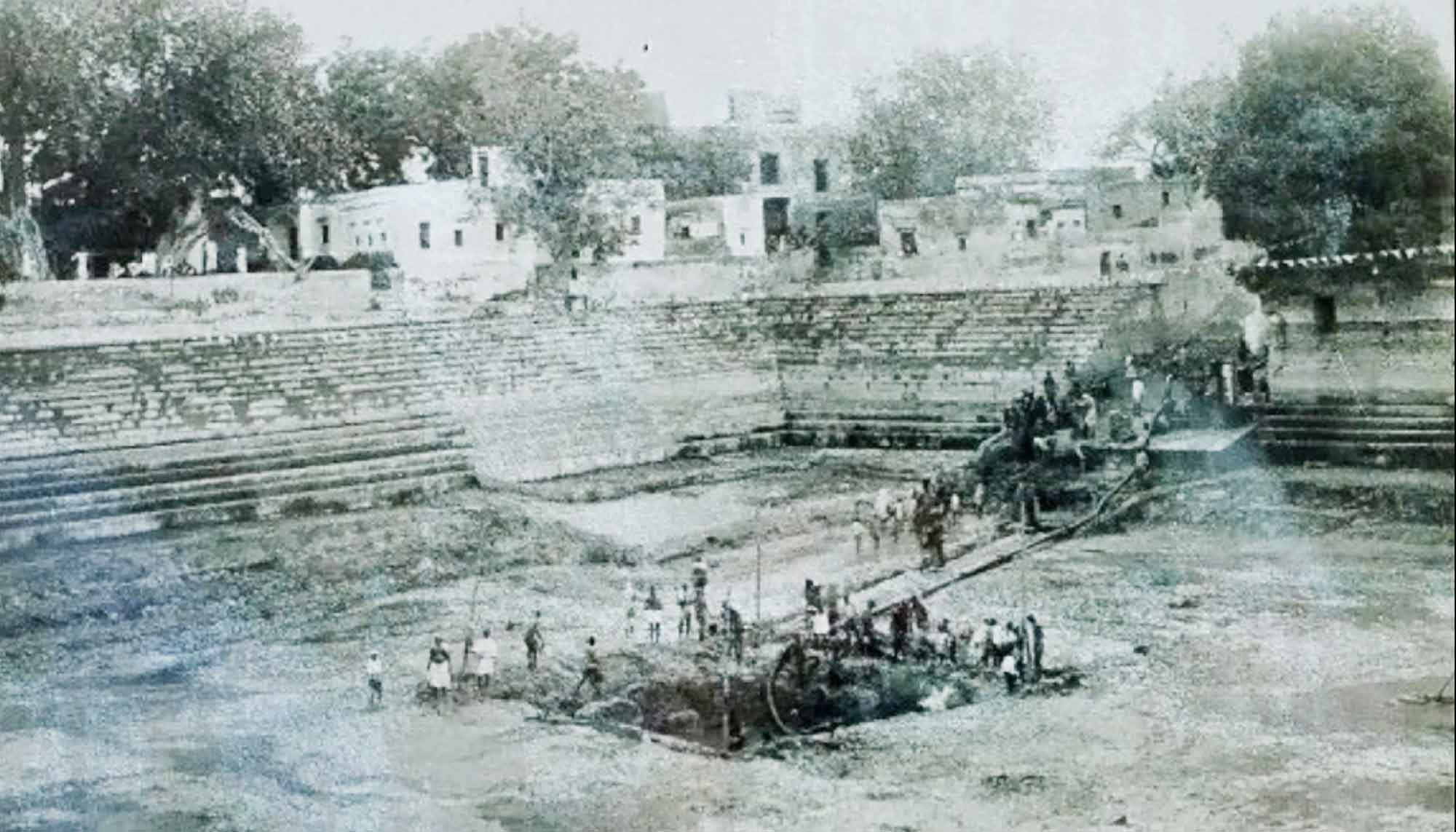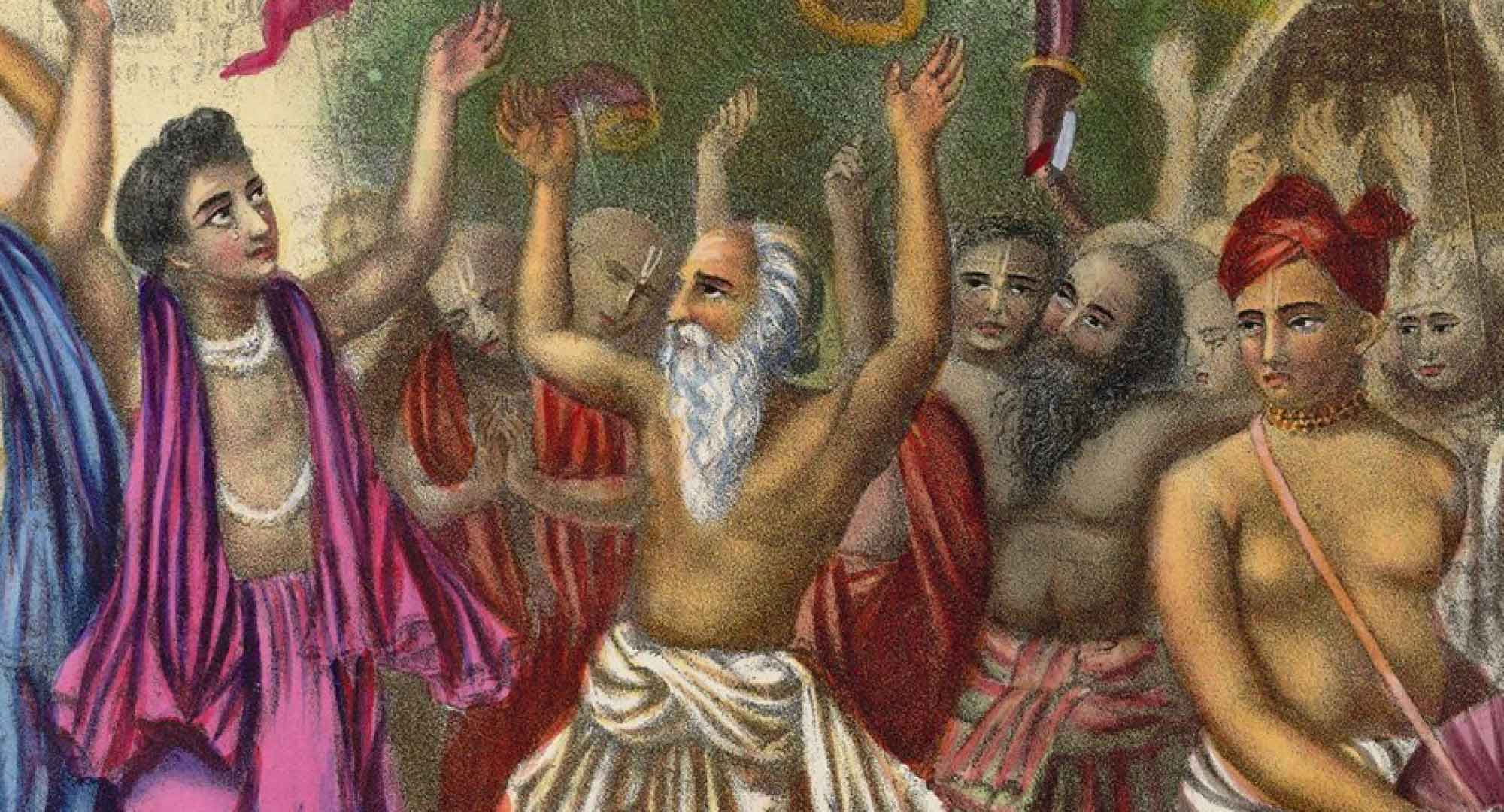Overview
‘Vaiṣṇava Granthāvalī’ was first published in Sajjana Toṣaṇī, Vol.10 issue 12 in 1899. Bhaktivinoda Ṭhākura reviews a book that includes three texts by the bāulas and sahajiyās, and the Ṭhākura gives his opinion.
(translated by Swami B.V. Giri)
Vaiṣṇava Granthāvalī
Bhakti-bhikṣu Śrīyuta Ambikā-caraṇa Gupta has published a book called Vaiṣṇava Granthāvalī. I have read the first part of this book. Ambikā Bābu writes in the introduction:
“I have done a lot of research at a huge cost, and after a long time I have wandered from village to village in the districts of Bengal and recovered many ancient and unpublished devotional works. I have seized the treasure of the heart of the devotees, the idol of their hearts, the crest-jewel. I will quench my thirst for bhakti by gradually revealing all that which has not been seen with their own eyes, and those whose words that no one has heard with their ears.”
Ambikā Bābu’s words and promises are not bad. Many Vaiṣṇava texts are unpublished. When he can find those books and print them with the help of a scholar, it will delight us. Among the four texts that have been printed in the first part is the Vaiṣṇava text, Narottama Vilāsa. This was published in Baṭalā previously. In that edition many mistakes can be seen. After looking at one or two versions of the text, it can be corrected and printed if possible. The ślokas are extremely inaccurate. Such books are unpleasant. The other three books, Durlabha Sāra, Ātma-Tattva and Amṛta Rasāvalī are untouchable for Vaiṣṇavas because they are completely opposed to Vaiṣṇava philosophy.
The Sahajiyā Doctrine Within
It would be better if Durlabha Sāra remained durlabha (rare)! There is no doubt that some sahajiyā fellow has written this book in the name of Locana Dāsa Ṭhākura. The following verses reveal the sahajiyā doctrine:
śrī-kṛṣṇa puruṣa rādhā prakṛti ākṛti
vidyamāna pāñā kare e bhāva ārati
(“Śrī Kṛṣṇa represents the puruṣa [male] and Rādhā, the form of prakṛti [female]. Whenever They are present, one should perform this bhāva-ārati.”)
sarva-kāla vidyamāna nahe prabhu seha
puruṣa kemane kare prakṛti se leha
(“When the Lord is not present at all times, how does the puruṣa relish the prakṛti?”)
sākṣāṭ abhāve sei karaye śrī-mūrti
tāṅhā āropiyā saba nija prema ārti
(“When they do not meet directly, then there is still the Deity. Then one should consider all this to be the painful feelings of prema.”)
samarpaṇa kari tabe āpanāra dharma
laya ki nā laya tāra kebā jāne marma
(“But surrendering to His dharma – who really knows whether He accepts it or not?”)
doṅhe rase vidagdha rūpe guṇe kama
tabe se upajaye sahaja bhakti prema
(“Even if the man and woman are very expert in rasa, but less in beauty and quality, then this increases sahaja-bhakti-prema [easy bhakti-prema].”)
kṛṣṇa ārādhanā ei paricarya nāma
indriya śuśrayā kare sevakera kāma
(“This is a sign of the worship of Kṛṣṇa. The senses take shelter of the servitor’s desires.)
vyakata kariyā prabhu kaila hena karma
tabu nā bujhila keha mahāprabhura marma
(“Expressing this, the Lord performed many deeds, but still nobody can understand the purpose of Mahāprabhu.”)
All the śāstra quoted in this text have been distorted in many places in order to create sahaja–bhajana (easy bhajana). Sahaja-bhajana is established by translating a few verses of Bhāgavata’s Rāsa-Pañcādhyāya. (1) The following śloka is been used throughout the book:
anugrahāya bhaktānāṁ mānuṣaṁ deham āsthitaḥ
bhajate tādṛśīḥ krīḍā yāḥ śrutvā tat-paro bhavet
(“Out of mercy to His devotees, the Lord assumes a humanlike form and performs such pastimes that will attract those who hear about them to become devoted unto Him.” – Śrīmad Bhāgavatam 10.33.36)
Delusional Conclusions
Ātma-Tattva is not Vaiṣṇava work, but a Bāula text. Vaiṣṇavas do not make up siddhānta such as this:
How many types of jīva are there?
There are five jīvas.
What are they?
Sthūla-jīva (physical jīva), taṭastha-jīva (marginal jīva), baddha-jīva (bound jīva), mukta-jīva (liberated jīva) and sukṣma-jīva (subtle jīva) – these are the five kinds of jīva.
Who is said to be a sthūla-jīva?
One who has arisen from passionate energy, either in a gross form or without a form.
Who can be said to be a taṭastha-jīva?
The jīva that has ten senses with no real qualities.
Who is called a baddha-jīva?
A father who is bound by the ropes of the son, in other words, one who suffers different results of karma.
Who is considered to be a mukta-jīvā?
One who is the servant of the guru, who renounces all enjoyment.
Who is a sukṣma-jīva?
He is a servant of Kṛṣṇa.
Where does the jīvātmā reside?
How did one utensil fall into place with another utensil? From tattva-vastu (objects of reality)
What are the tattva-vastu?
The ātmā made up of the five gross elements.
Such delusional conclusions are found throughout this text. Vaiṣṇavas will laugh when they read this.
Again, Amṛta-rasāvalī is a sahajiyā text. There it is written:
“Who says that sahaja (‘the easy path’) cannot be understood? For one who does not follow sahaja, every birth is useless.”
There are many such books amongst the bāulas and sahajiyās. At one time, we went searching for texts and we found many such books. We were disgusted by them. We threw them all into the Gaṅgā to become purified.
Ambikā Bābu should throw all these books away as soon as he sees them. If he finds a Vaiṣṇava work such as Śrī Narottama Vilāsa, he should correct it and include it in the Vaiṣṇava Granthāvalī.
(1) Translators Note: The Rāsa-Pañcādhyāya are the five chapters of the Tenth Canto in the Śrīmad Bhāgavatam describing Kṛṣna’s rāsa-līlā.













